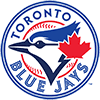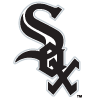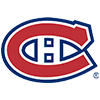Over the past week, I have seen the likes of Marcus Stroman, Carlos Rodon, James Shields and Drew Smyly dropped onto the waiver wire in 12-team mixed leagues (5x5 roto). Each one of these pitchers was drafted between picks 25 and 50 among all starting pitchers, according to NFBC ADP, and yet one-third of the way through the season and their managers were ready to pull the plug. One could understand if injuries fueled the decision, but in each case it was poor performance that got them cut from fantasy rosters.
Let's dive into the cases of these five pitchers to see if they are in fact
Over the past week, I have seen the likes of Marcus Stroman, Carlos Rodon, James Shields and Drew Smyly dropped onto the waiver wire in 12-team mixed leagues (5x5 roto). Each one of these pitchers was drafted between picks 25 and 50 among all starting pitchers, according to NFBC ADP, and yet one-third of the way through the season and their managers were ready to pull the plug. One could understand if injuries fueled the decision, but in each case it was poor performance that got them cut from fantasy rosters.
Let's dive into the cases of these five pitchers to see if they are in fact worth dumping, or if perhaps these albatrosses should continue to drag down the roster until they get right. The final verdict depends on the overall makeup of your team and league, but for the sake of the verdicts below assume that we are talking about a standard 12-team mixed league in 5x5 roto.
Marcus Stroman (RHP) 
ADP: 90, SP26
| Year | IP | ERA | WHIP | W - L | K | BB |
| 2016 | 74.2 | 4.46 | 1.25 | 5 – 1 | 51 | 20 |
| 2015 | 27.0 | 1.67 | 0.96 | 4 – 0 | 18 | 6 |
The above chart doesn't include his postseason stats from last October, but Stroman added 19.1 innings with a 4.19 ERA, including 10 strikeouts and four walks. The right-hander was valued at the top of the SP3 board, but there was a wide gulf in ADP between him and SP24 Cole Hamels, who checked in at an ADP of 75 overall. Still ranked within the top 100, Stroman will have to shatter some previous career-bests to meet that value, and though his ERA is a bit on the high side there is nothing else about his line that seems outside of expectation.
His strikeout rate is low for a pitcher drafted that highly, and at 6.1 K/9 it's low enough to be unplayable for a team that doesn't have a Yankees reliever to close the gap, and therein lies the problem. In the minors, he piled up 209 strikeouts in 174.1 innings (10.8 K/9), but those K's just haven't translated to the majors. He has altered his approach, as well. Stroman was averaging better than 94 mph on the fastball when he first came up, but he has sacrificed some velocity for movement and is now averaging 92.6 mph, with nearly all of his heaters classified as sinkers due to the vicious arm-side run that he has on the pitch. The approach is designed around generating weak contact, not racking up the strikeouts.
Verdict: Drag. Stroman has an enticing combination of right-now ability and future upside such that he's a necessary hold in the majority of formats. His next start is in Boston, a game that he has no business starting for your fantasy team, so to the bench he goes. Plug him in when the schedule softens, but I wouldn't expect the strikeouts to spike – the categories where he'll likely have a positive impact are ERA, WHIP and wins.
Carlos Rodon (LHP) 
ADP: 129, SP35
| Year | IP | ERA | WHIP | W - L | K | BB |
| 2016 | 57.1 | 4.24 | 1.48 | 2 – 4 | 54 | 21 |
| 2015 | 139.1 | 3.75 | 1.44 | 9 – 6 | 139 | 71 |
It was easy to cherry-pick his one disaster start for the "Day It All Clicked" exercise a couple weeks ago, but what is more difficult is cherry-picking one outstanding start for Rodon this season. He has topped out at 24.7 fantasy points on DraftKings this season, in a game that involved five walks over just 6.0 innings. The strikeouts are basically at the per-inning rate of last season, but he has built that rate through consistency, with no more than seven strikeouts in a single ballgame. Granted, those are largely DFS concerns, but the lack of dominance is concerning for a southpaw with Rodon's excellent reputation for stuff.
His fastball has followed an interesting pattern, as his average velocity decreased throughout last season and he showed up in April having lost another tick – averaging just 92.5 mph for the first month of the season and failing to break 93.1 mph on average in any since game. Then something clicked for him in May, velocity-wise, and between his starts on May 4 and May 10 his fastball velocity jumped more than two mph, and it has stayed there for the past three starts. The first start of jacked up velo turned out very poorly, with Rodon giving up six runs on 12 hits and two walks in 6.2 innings, but his past three starts have been solid: a 2.55 ERA with 14 strikeouts and five walks in 17.2 innings, albeit with 20 hits and two homers allowed.
Verdict: Drag. Owning Rodon for the next two weeks will not be for the feint of heart. He is scheduled to face the Tigers (who mash lefties) twice and the Nationals once, teams that will prove to be a true test for his new and improved stuff. Keep in mind that his numbers might look even worse two weeks from now, but that the underlying stuff might still be showing improvement.
James Shields (RHP) 
ADP: 130, SP36
| Year | IP | ERA | WHIP | W - L | K | BB |
| 2016 | 67.1 | 4.28 | 1.43 | 2 – 7 | 57 | 27 |
| 2015 | 202.1 | 3.91 | 1.33 | 13 – 7 | 216 | 81 |
His 2015 season stood out on his resume for its high counts of both strikeouts and walks, but peel back a layer of the statistical onion and we see that Shields has retained the atrocious walk rate of last season (3.6 BB/9) but given back the extra strikeouts that had buffered his fantasy value, dropping from 9.6 K/9 to 7.6 K/9 and turning an asset into a liability. He's not giving up quite as many homers as last season, but his 1.2 HR/9 is still worse than average, and his hits are nearly as inflated as his walks, resulting in an unsightly WHIP.
To his credit, Shields has been a quality start machine in 2016, earning the QS in eight of his 11 outings, with two games falling short because he allowed one run more than the threshold allows. Don't let the one awful start distract from what Shields has done this season, and there's no reason for bad blood if he was not in your lineup on the day that he was blasted; the right-hander has offered enough other reasons to look the other way when seeking innings.
Verdict: Drop. Shields' value is largely dependent on whether the league in question counts wins or quality starts. Assuming this is standard 5x5 roto, then Shields is a drop candidate at this juncture. The Padres have a weak offense (that randomly burps out a dozen runs), which will harm his shot at piling up any wins. So if the strikeouts are missing, the ERA is inflated and the WHIP is out of control, then he's running out of categories where he can help a fantasy ball club.
Drew Smyly (LHP) 
ADP: 160, SP45
| Year | IP | ERA | WHIP | W - L | K | BB |
| 2016 | 66.0 | 4.77 | 1.18 | 2 – 7 | 70 | 16 |
| 2015 | 66.2 | 3.11 | 1.17 | 5 – 2 | 77 | 20 |
The left-hander with the goofy delivery went on to spin three more great starts in a row, and after his start on May 4 Smyly had a 2.72 ERA with 47 strikeouts in 39.2 innings. I profiled Smyly's case in "The Day It All Clicked," imagining his numbers if that gem against the Red Sox had never taken place, and the results weren't pretty. Things got worse for Smyly in the time since that article was written, and he is coming off his worst start of the campaign, an eight-run fiasco that featured 12 hits and a walk over 4.0 innings. He has an 8.82 ERA over his last three starts, with 25 hits and five home runs allowed in 16.1 innings.
His strikeout rates of the past two (partial) seasons are relatively new phenomena, making it difficult to trust that he can sustain those K frequencies over an entire season. He has been nearly impossible to spot-start, as Smyly has pitched his best games against the Red Sox and Blue Jays of the world yet been ripped by the likes of the Marlins, Mariners and Royals. His frequency of homers allowed have been a problem throughout his career, but Smyly has relied on low rates of walks and hits to keep the bases clear when they inevitably get flushed. That strategy hasn't worked this season, as seven of the 12 homers that he has given up have come with runners aboard.
Verdict: Drop. It's enticing to get caught up in small-samples when they come packaged as a season stat-line, such as Smyly's 2015 campaign or early 2016 stretch, but expecting a pitcher to do something he has never done before – like consistently produce quality innings – is a heavy expectation to carry.

























